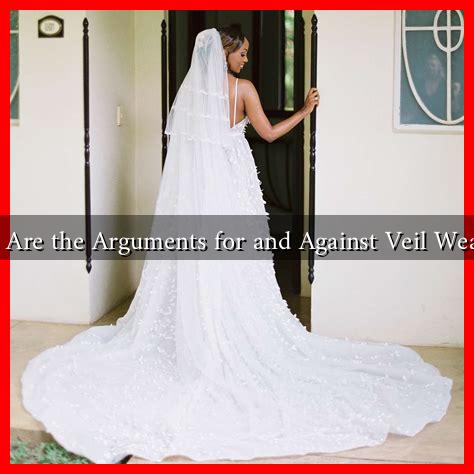-
Table of Contents
What Are the Arguments for and Against Veil Wearing?
The practice of wearing a veil, particularly among Muslim women, has sparked significant debate across various societies. This article explores the arguments for and against veil wearing, providing insights into cultural, religious, and social dimensions of this practice.
The Case for Veil Wearing
Proponents of veil wearing argue that it serves multiple purposes, ranging from religious obligations to personal empowerment. Here are some key arguments in favor of the practice:
- Religious Significance: For many Muslim women, wearing a veil is a fundamental aspect of their faith. The Quran encourages modesty, and the veil is seen as a manifestation of this principle. Many women feel that wearing a hijab or niqab fulfills their religious duties.
- Personal Empowerment: Some women argue that wearing a veil allows them to reclaim their identity and autonomy. By choosing to wear a veil, they assert control over their bodies and how they are perceived in society.
- Cultural Identity: The veil can serve as a symbol of cultural heritage. For many women, wearing a veil connects them to their roots and traditions, fostering a sense of belonging within their communities.
- Protection from Objectification: Advocates argue that the veil can help reduce the objectification of women. By covering their hair and body, women may feel less subjected to societal pressures regarding beauty standards.
Counterarguments Against Veil Wearing
On the other hand, there are significant arguments against the practice of veil wearing, often centered around issues of freedom, gender equality, and social integration. Here are some of the main points raised by critics:
- Gender Inequality: Critics argue that the veil can perpetuate gender inequality. They contend that it is often imposed on women by patriarchal structures, limiting their freedom and autonomy.
- Social Integration Challenges: In multicultural societies, the veil can be seen as a barrier to social integration. Some argue that it creates divisions between communities and hinders communication and understanding.
- Security Concerns: In some contexts, the veil has been associated with security issues. For instance, in countries like France, where the burqa is banned in public spaces, the argument is that it can obscure identity and pose security risks.
- Misinterpretation of Freedom: Critics often argue that while some women choose to wear the veil, others may feel coerced into doing so. This raises questions about the true nature of choice and freedom in societies where cultural or familial pressures exist.
Case Studies and Statistics
To better understand the implications of veil wearing, it is essential to look at real-world examples and statistics. For instance, a 2017 study by the Pew Research Center found that:
- Approximately 62% of Muslim women in countries like Turkey and Indonesia reported wearing a hijab as a personal choice.
- In contrast, in countries like Saudi Arabia, the majority of women reported wearing a veil due to societal expectations rather than personal preference.
Additionally, countries like France have implemented laws banning the full-face veil in public spaces, citing security and integration concerns. This has led to significant debates about individual rights versus societal norms.
Conclusion
The debate surrounding veil wearing is complex and multifaceted, encompassing religious, cultural, and social dimensions. While proponents argue for the veil as a symbol of faith and empowerment, critics raise concerns about gender inequality and social integration. Ultimately, the choice to wear a veil should be respected as a personal decision, reflecting the diverse experiences and beliefs of women around the world. Understanding these arguments can foster greater dialogue and respect among differing viewpoints.
For further reading on this topic, you can explore resources from organizations like the Pew Research Center and various academic studies that delve deeper into the implications of veil wearing in different cultural contexts.

